Labyrinths: Christ the King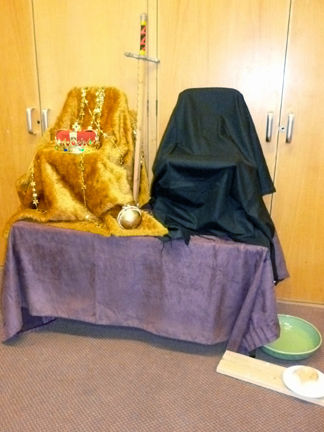 Christ the King, which is celebrated right at the end of the church year, seemed a good opportunity to use the labyrinth again. As a focus I placed two chairs on a table covered with purple cloth. One chair was plain, covered in black material. The other showed the trappings of kingship - fake fur, golden crown, sword and "jewels". StoryFor the story, I adapted the all age talk for Christ the King that begins by asking "What kind of King? Is Jesus a king who lives in a palace? Is he a king who wears a crown and leads his armies into battle? What kind of a king?" I had asked this as a rhetorical question but the children were keen to answer: 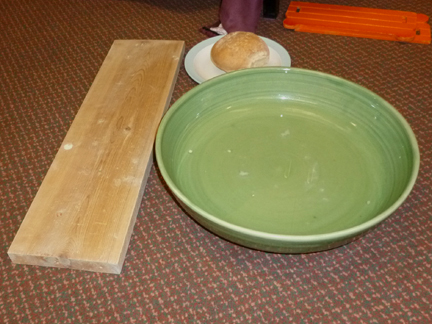 "The king of creation" "The king who shows the way" "The king of peace - no, the Prince of Peace." The story goes on to talk about the things that Jesus came close enough to touch: bread (feeding the 5000, the last supper, refusing to be tempted in the desert); water (baptism, turning water into wine at the wedding in Cana, washing the feet of his disciples) wood (working as a carpenter, the boat on the Sea of Galilee, the cross). I set the labyrinth out as before but this time placed only a small box containing tiny crowns in the centre. 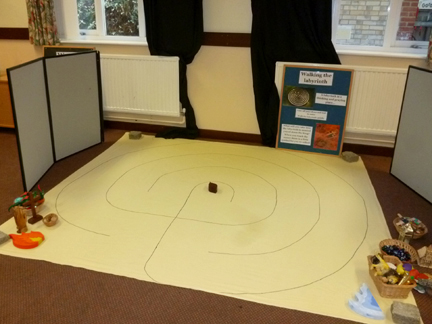 Various symbols were placed around the edges. I had hung black material over the patterned curtains but another time would add a picture so that there was a focus behind the labyrinth. I asked the children to think about what they might take into the labyrinth to symbolise Jesus or Jesus the King and where they might place them. What should be placed at the centre? Words for the boards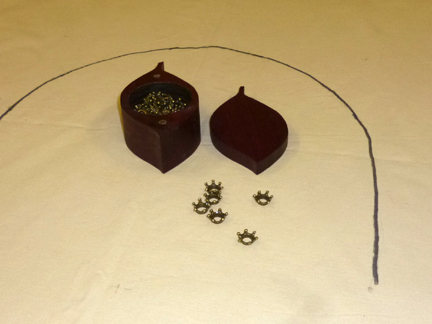 A labyrinth is a thinking and praying place... Take off your shoes and wait to enter Walk the labyrinth quietly What will you take into the labyrinth to remind you of Jesus the King? When you reach the centre there is a little symbol to collect. As well as walking the labyrinth, people could work with sticks and wood, bread dough, crown making, water activities and a free response. How well did it work?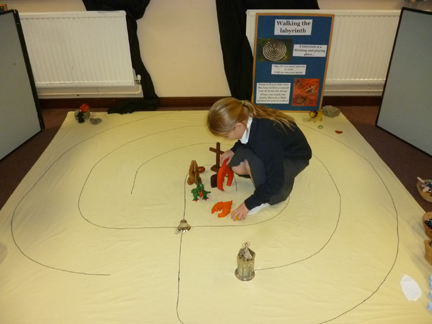 The first child to walk the labyrinth took the cross to place at the centre. Other children brought the flame, the dragon and the praying hands. I sat with the labyrinth and was able to ask some of the children why they had chosen those particular symbols. I made it clear that this was a question they need only answer if they wanted to. One child talked about taking the lantern to show Jesus as the light of the world. Another took the lion and the dragon as symbols of creation. The child who took the bell spoke about time, especially Jesus' time on the cross. 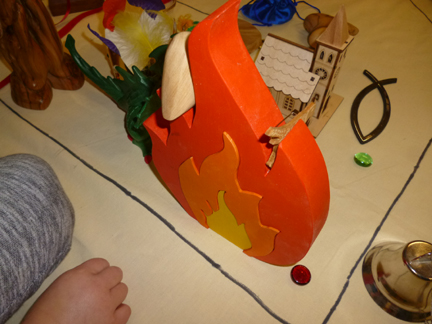 It was not easy to stay sitting with the labyrinth, as several children could not make the beginning of the event and so I told the story (four times!) to them as they arrived. In some ways this was a positive as I felt the storytelling worked better in small groups. One child hung the coloured ribbons on the cross. Another placed the wooden heart on the flame. While I don't know what the children intended by these symbols, it didn't affect their impact. The bird on the flame was added by a three year old. This time the children seemed more inclined to play with the labyrinth. They were more experimental, placing symbols at different places in the labyrinth and at the edges. One child set up a scene outside the labyrinth using a soft flame, a figure and a heart. Towards the end one child used the shimmer stones to make a trail through the labyrinth! I felt the adults used the labyrinth less this time, perhaps because I wasn't sufficiently static to be able to encourage them. You can find out how we created the labyrinth here: Labyrinth The labyrinth was used during a Footsteps session. Sarah |